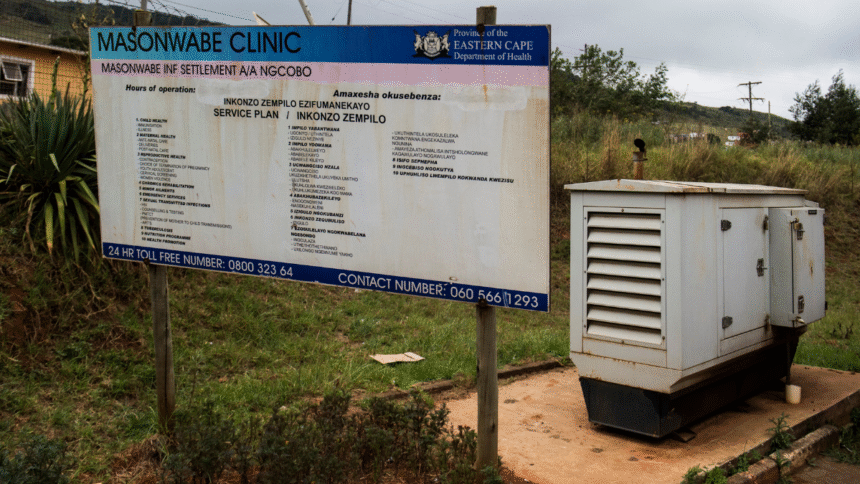Inspecting over 3,000 public health facilities in South Africa is no small feat. The Office of Health Standards Compliance (OHSC) has been tasked with this challenging job, ensuring that healthcare facilities adhere to the 23 standards set by the National Health Act. But is this system of measuring quality fair?
Health economist Susan Cleary believes that the current measures used by the OHSC make it nearly impossible for facilities to pass the test. By scoring establishments based on criteria they have little control over, the system may be setting them up for failure.
In a recent report, the health ombud highlighted serious concerns about the care provided at two public hospitals in the Northern Cape, describing it as “unsafe and substandard.” This, coupled with reports of infections in Gauteng hospitals and questionable practices in Eastern Cape facilities, has raised alarm bells about the state of healthcare in South Africa.
With the government’s plans to implement the National Health Insurance scheme for universal health coverage, the quality of healthcare facilities is under intense scrutiny. The OHSC plays a crucial role in ensuring safe healthcare for all, but questions remain about the effectiveness of its inspection system.
As we delve into the OHSC’s inspection reports, we aim to shed light on the benchmarks used to assess quality in clinics, community health centers, and hospitals. While the focus is on the public health sector, it is important to remember that the goal is to improve healthcare for all South Africans, whether they seek treatment in public or private facilities.
The road to universal health coverage is a long one, and we must start somewhere. By examining the data and holding healthcare facilities accountable, we can work towards a future where quality healthcare is accessible to all. Stay tuned as we continue to explore the state of healthcare in South Africa and strive for a healthier nation. The Office of Health Standards Compliance (OHSC) faced a daunting task in 2023 with only 53 people in their auditing unit conducting 734 inspections throughout the year. This workload translated to an average of two inspections per day, highlighting the challenges faced by the limited staff in meeting the extensive checklist requirements.
Adding to the complexity was the low compliance rate of public facilities, with only four out of 10 passing the assessment in 2022. This led to a backlog of re-inspections, further exacerbating the workload for the OHSC.
The stringent criteria for compliance, including non-negotiable, vital, and essential measures, set a high standard that many facilities struggled to meet. According to experts, the unrealistic expectations set by these standards may not reflect the actual quality of service but rather the lack of resources available to achieve full compliance.
When looking at compliance rates from a star rating perspective, no province received more than three stars in 2022. Gauteng performed the best, with three out of five facilities meeting the requirements, while other provinces struggled to reach even one compliant facility.
To address these challenges, experts suggest streamlining the requirements to focus on measures that a majority of facilities can realistically meet. By prioritizing essential criteria and allocating resources accordingly, decision-makers can work towards improving healthcare quality step by step.
A closer look at the minimum lifesaving measures required in public healthcare facilities revealed concerning gaps in emergency preparedness and patient care. In 2022, only Gauteng and the Western Cape met these requirements in a significant number of clinics and CHCs, while other provinces fell short.
The findings underscore the need for a more realistic approach to measuring healthcare quality and holding leadership accountable for substandard care. By focusing on achievable goals and allocating resources effectively, the healthcare system can make meaningful improvements to benefit both staff and patients. Title: The Benefits of Mindfulness in Everyday Life
In today’s fast-paced world, it’s easy to feel overwhelmed and stressed. With so much going on, it’s important to find ways to calm the mind and center ourselves. One powerful tool for achieving this is mindfulness.
Mindfulness is the practice of being present in the moment and fully engaged with whatever you are doing. It involves paying attention to your thoughts, feelings, and physical sensations without judgment. By practicing mindfulness, you can cultivate a sense of peace and clarity that can help you navigate life’s challenges with greater ease.
One of the key benefits of mindfulness is its ability to reduce stress. When we are constantly worrying about the future or ruminating on the past, our minds become overloaded and our bodies tense up. By practicing mindfulness, we can train ourselves to focus on the present moment and let go of unnecessary stress and anxiety.
In addition to reducing stress, mindfulness can also improve our overall well-being. Studies have shown that regular mindfulness practice can lead to increased feelings of happiness and contentment, as well as improved relationships with others. By being present and fully engaged in our interactions, we can deepen our connections with loved ones and cultivate a greater sense of empathy and compassion.
Furthermore, mindfulness can also enhance our mental clarity and focus. By training ourselves to pay attention to the present moment, we can sharpen our concentration and improve our decision-making abilities. This can be particularly beneficial in our professional lives, helping us to be more productive and efficient in our work.
Overall, the benefits of mindfulness in everyday life are vast. By practicing mindfulness regularly, we can reduce stress, improve our well-being, and enhance our mental clarity. So why not give it a try? Start incorporating mindfulness into your daily routine and experience the positive impact it can have on your life.








